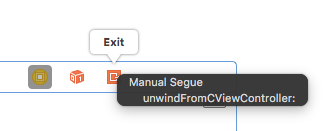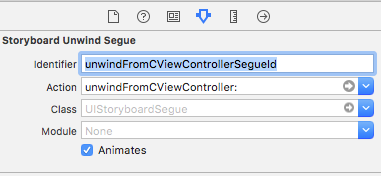I am trying to code a hangman game and am having trouble with unwind segues. I have multiple view controllers that all ultimately lead to the same view, where the user plays the actual hangman. However, depending on the presenting controller, I want the game to be in different "modes" (ie: multiplayer, single player, etc.). I am trying to add a play again button that unwinds to the previous view controller, but am unsure how to unwind when there are multiple paths the user could have taken to get to this view.
In other words, my app kind of goes:
A -> B -> C or
A -> D -> C where C can (ideally) unwind to D or B.
I was wondering what the best way to implement this is? Should I just embed all my view controllers in navigation controllers? Or is there a way to present a certain view controller based on a certain condition? Thank you for any help!


